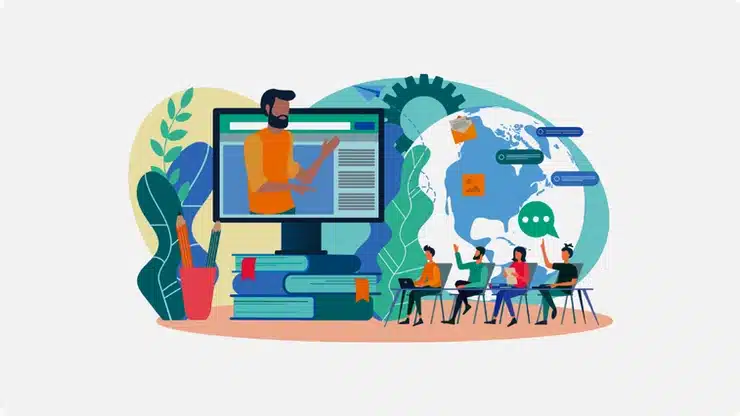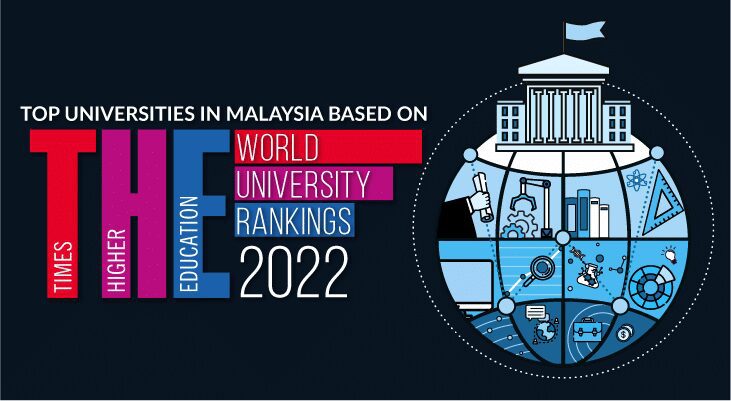ครูและผู้ปกครองต้องฝ่าฟันอุปสรรคมากมายที่ต้องเผชิญด้วยตัวเองท่ามกลางกฎระเบียบการเปิดเรียนใหม่ การเว้นระยะห่าง การติดตามการสัมผัส และความไม่แน่นอนต่างๆ มากมายในปี 2020 การมีส่วนร่วมของเด็กๆ ถูกจำกัดด้วยห้องเรียนแยกย่อยและ Google Classrooms ทำให้การเรียนรู้ด้านวิชาการ สังคม และอารมณ์ได้รับผลกระทบไปด้วย ผลกระทบต่อการศึกษา STEAM นั้นยิ่งรุนแรงขึ้นไปอีก! แทนที่จะสนับสนุนให้นักเรียนสร้างหุ่นยนต์และทดลองใช้บอร์ด Arduino ครูจำเป็นต้องสอนผ่านวิดีโอบรรยายเพื่อให้เป็นไปตามข้อกำหนดของหลักสูตร
หากคุณสามารถเชื่อมต่อได้ เราพร้อมที่จะบอกคุณว่าเราได้ยินคุณ เห็นคุณ และรู้สึกถึงคุณ! เจ้าหน้าที่ของเราพร้อมที่จะมอบเครื่องมือและทัศนคติที่คุณต้องการเพื่อมีส่วนร่วมกับนักเรียนของคุณอย่างมีประสิทธิภาพและคืนประกายในดวงตาของพวกเขาเมื่อพวกเขาสร้างสรรค์และทำซ้ำ โดยอิงตามคำติชมจากนักการศึกษาและผู้ปกครอง เราได้รวบรวมรายการสามสิ่งที่ควรหลีกเลี่ยงในการสอน STEM, STEAM และการเขียนโค้ดในปี 2021 โปรดอ่านให้จบ เนื่องจากย่อหน้าสุดท้ายมีความสำคัญที่สุด
1. อย่ากลัวที่จะสร้างสรรค์เมื่อต้องเรียนรู้แบบปฏิบัติจริง
การสอน STEAM หรือการเขียนโค้ดให้กับครูสอน STEM ส่วนใหญ่ดูเหมือนจะเป็นงานที่น่ากลัว หากไม่มีสิ่งกีดขวางหรือเทคโนโลยีที่จับต้องได้ ฉันจะสอนการคิดเชิงคำนวณให้กับเด็กอายุ 7 ขวบได้อย่างไร คุ้มไหมที่จะใช้ชุดฮาร์ดแวร์สำหรับนักเรียนในชั้นเรียนแบบผสมผสาน เนื่องด้วยปัญหาสุขภาพจาก COVID คุณอาจรู้สึกว่าการฝึกอบรม STEAM ของคุณมีข้อจำกัด เพราะการนำส่วนประกอบฮาร์ดแวร์มาใช้ในหลักสูตรนั้นไม่สามารถทำได้เสมอไป ต่อไปนี้คือคำแนะนำบางประการสำหรับการคิดสร้างสรรค์ขณะสอนทักษะการคิดเชิงคำนวณ
เป็นไปได้หรือไม่ที่นักเรียนของคุณจะทำความสะอาดห้องของตัวเองไปพร้อมกับเรียนรู้ทักษะการคิดเชิงคำนวณ สำหรับเราแล้ว ดูเหมือนว่าจะเป็นสถานการณ์ที่ทั้งสองฝ่ายได้ประโยชน์ ด้วยเกมที่สนุกสนานและปราศจากเทคโนโลยีนี้ สอนนักเรียนของคุณเกี่ยวกับพื้นฐานของการคิดเชิงคำนวณโดยสนับสนุนให้พวกเขาคิดและวางแผนวิธีแก้ปัญหา เชื่อเราเถอะว่าพ่อแม่ของพวกเขาจะขอบคุณคุณในภายหลัง If-then เป็นภาษาการเขียนโปรแกรมทั่วไปที่สั่งให้คอมพิวเตอร์ดำเนินการตามอินพุต (หรือสาเหตุและผล) หลักการสำคัญนี้ไม่ได้จำกัดอยู่แค่การฝึกอบรมบนคอมพิวเตอร์ แท็บเล็ต Chromebook หรือฮาร์ดแวร์อื่นๆ ด้วยเกมที่เรียบง่ายและมีชีวิตชีวานี้ คุณสามารถสอนนักเรียนของคุณให้คิดเกี่ยวกับคำสั่งเงื่อนไขได้
2. อย่ากลัวที่จะลองเทคนิคใหม่ๆ ในการโต้ตอบกับนักเรียน
สถานการณ์การเรียนรู้ใหม่ๆ นำมาซึ่งปัญหาใหม่ๆ “ฉันจะดึงดูดนักเรียนได้อย่างไรหากไม่ได้อยู่ในห้องเรียนจริง” เป็นหนึ่งในความกังวลใจที่ร้ายแรงที่สุดที่นักการศึกษาต้องเผชิญทุกวัน เราต้องตอบสนองอย่างไร? ใช้ประโยชน์จากทรัพยากรฟรีให้เต็มที่ ลองใช้วิธีการสอนใหม่ๆ ลองใช้วิธีการสอนที่แตกต่างออกไป คุณกำลังมองหาวิธีเพิ่มสีสันให้กับการสนทนาในห้องเรียนอยู่หรือเปล่า? คุณเบื่อกับการอ่านบทสนทนาและโพสต์ในบล็อกหรือไม่? ลองชมวิดีโอแทนสิ! นักเรียนสามารถสร้างคำตอบวิดีโอสำหรับคำถามในการสนทนาและแบ่งปันกับเพื่อนร่วมชั้นได้อย่างรวดเร็วโดยใช้ Flipgrid นี่เป็นวิธีที่ง่ายที่สุดในการสร้างการเรียนรู้แบบกลุ่มในห้องเรียนแบบตัวต่อตัวจากเมื่อก่อน!
3. อย่าลืมสร้างพื้นที่ส่วนตัวสำหรับการทำงานร่วมกัน
คุณเคยรู้สึกเร่งรีบในฐานะครูว่าต้องทำให้มั่นใจว่าคุณให้การศึกษาที่ยอดเยี่ยมภายใน 30 หรือ 45 นาทีที่ได้รับมอบหมายกี่ครั้ง คุณเคยบรรยายแทนการสอนแบบตัวต่อตัวกี่ครั้ง แต่ปรากฏว่านักเรียนลืมตาหรือหน้าจอไปเฉยๆ นี่เป็นการต่อสู้ที่แท้จริง แม้ว่าการนำการทำงานร่วมกันมาใช้ในรูปแบบการบรรยายออนไลน์อาจดูเหมือนต้องใช้เวลา แต่เราอาจใช้ฟีเจอร์ต่างๆ บนแพลตฟอร์มอย่าง Zoom เพื่อปรับปรุงการมีส่วนร่วมและการเรียนรู้ด้วยวิธีต่อไปนี้: ให้เวลา 5 นาทีต่อชั้นเรียนในการเข้าสังคมและติดต่อกัน อาจเป็นกลุ่มเล็กๆ ที่มี 3-4 คน ครูสามารถกำหนดคำถามในการอภิปรายตามความสมัครใจ หรือให้นักเรียนเป็นผู้นำการอภิปรายด้วยตนเอง (นี่คือคำถามที่จะช่วยให้คุณเริ่มต้นได้: “ในฐานะนักเรียนชั้นประถมศึกษาปีที่ __ ทักษะหนึ่งอย่างที่คุณสามารถฝึกฝนได้ในวันนี้ที่จะช่วยคุณได้ในอนาคตคืออะไร”) การสร้างข้อสอบแบบจำกัดเวลาตามโครงการที่อาจใช้กับกลุ่มนักเรียน 4-5 คนผ่านห้องแยกย่อยออนไลน์อาจเป็นแนวทางที่ยอดเยี่ยมในการเพิ่มการมีส่วนร่วมของนักเรียนและระบุช่องว่างในการเรียนรู้
การโทรติดต่อแบบไม่ได้นัดหมายนั้นทำกันเป็นครั้งคราว คุณสามารถเลียนแบบการมีอยู่และพลังของห้องเรียนแบบเจอหน้ากันได้โดยเพิ่มการโทรติดต่อแบบไม่ได้นัดหมายเข้าไปในหลักสูตรของคุณและขอคำติชมแบบสดๆ จากนักเรียนของคุณ นอกจากนี้ยังให้โอกาสคุณตรวจสอบแบบตัวต่อตัวอีกด้วย นักเรียนมีส่วนร่วมทางกายภาพ แต่ไม่ได้อยู่ที่นั่นจริงๆ แทนที่จะใช้กลไกการสำรวจความคิดเห็นในตัว ให้ให้นักเรียนชูกำปั้นเพื่อเลือกตัวเลือกหนึ่งและยกมือเพื่อเลือกตัวเลือกอื่น หากมีพื้นที่เพียงพอ ครูอาจเริ่มชั้นเรียนแต่ละชั้นด้วยการยืดเส้นยืดสายหรือทำสมาธิสองนาทีในตอนเช้าหรือบ่าย กิจกรรมเหล่านี้ช่วยให้นักเรียนมีสมาธิและปรับตัวใหม่สำหรับบทเรียนที่กำลังจะมาถึง แนะนำชั่วโมงทำการ 'สำหรับนักเรียน โดยนักเรียน' ซึ่งนักเรียนสามารถช่วยกันดีบั๊กโค้ดหรือชี้แจงคำถามของกันและกัน
#4. อย่าเชื่อว่าคุณจำเป็นต้องเป็นซูเปอร์ฮีโร่
คุณทำหน้าที่ครูและผู้ปกครองได้ดีที่สุดแล้ว ความกระตือรือร้นที่ครูและผู้ปกครองมอบให้กับลูกศิษย์มีความสำคัญมากกว่าคำแนะนำด้านการศึกษาใดๆ ในโลก ดูแลตัวเองเมื่อจำเป็น และจำไว้ว่านี่เป็นพื้นที่ที่ยังไม่มีใครสำรวจในโลกการศึกษา เมื่อจำเป็น ให้ทำบางอย่างเพื่อตัวเอง! เดินเล่น (และตรวจสอบให้แน่ใจว่าคุณแต่งตัวเหมาะสมหากคุณอยู่ในพื้นที่ที่มีอากาศหนาวเย็น) รับประทานอาหารกลางวันนอกบ้าน และอบคุกกี้! การดูแลตัวเองเป็นสิ่งสำคัญที่สุดที่คุณควรทำ








